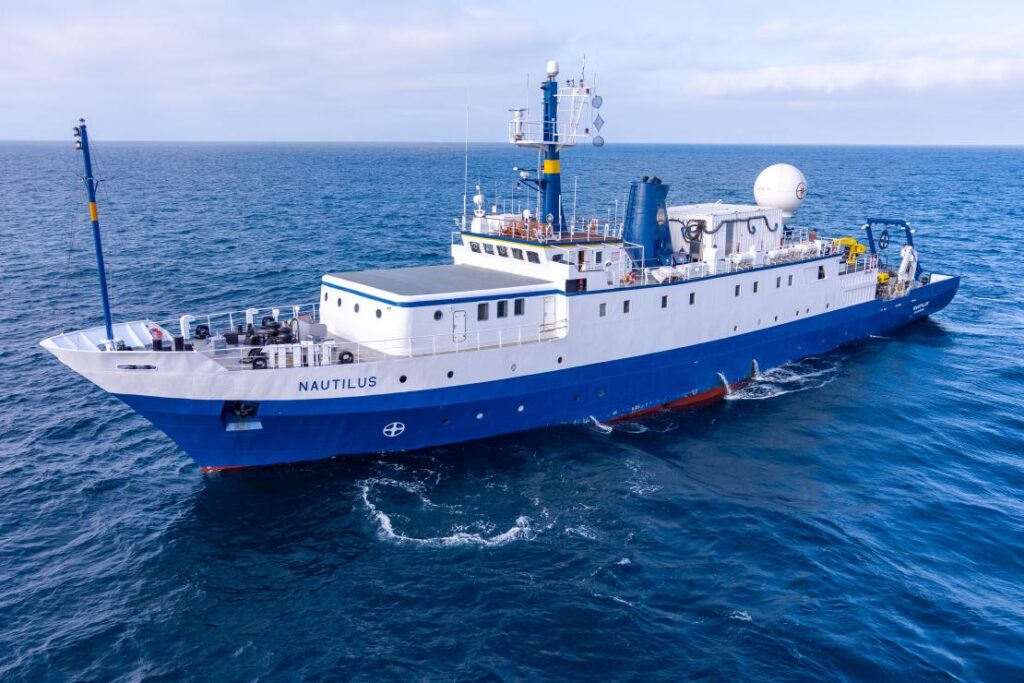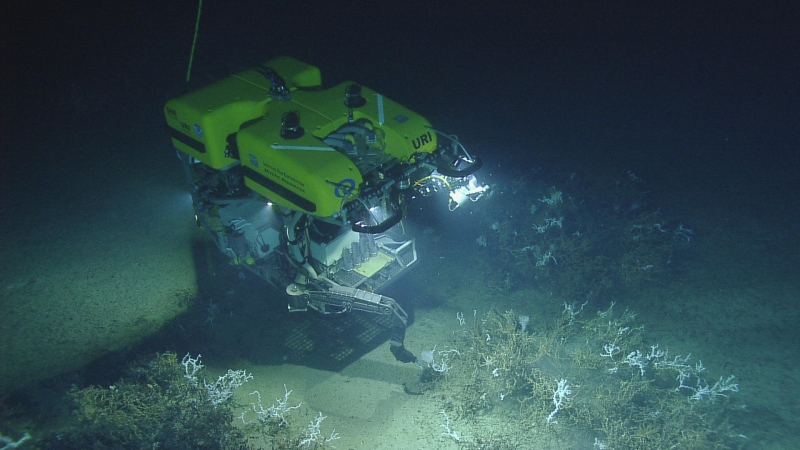Hey there, ocean explorers! Have you ever wondered what’s hiding beneath the waves of the big blue sea? Well, hold onto your snorkels, because we’re about to dive in!
You just never know what we have up our sleeves, and for both STEM Camp and Camp STEAM campers this summer, we had a special surprise in store: the opportunity to hear from and ask questions of the scientists and educators on board the E/V Nautilus, an ocean expedition vessel, LIVE from the Pacific Ocean!
We caught up with the E/V Nautilus, as it was on its way from Vancouver Island all the way to Honolulu!

About the E/V Nautilus
Ocean Exploration Trust and the Nautilus Exploration Program seek out new discoveries in geology, biology, and archaeology while conducting scientific exploration of the seafloor. Expeditions are launched aboard Exploration Vessel (E/V) Nautilus, a 68-meter research vessel equipped with remotely-operated vehicles (ROVs). During expeditions, the team offers scientists, educators, students (that’s us!), a remote exploration experience from the field, as well as ship-to-shore interactions direct to classrooms (and camps!).
On Friday, July 28th, campers saw a live presentation from Christopher Clauss, Science Communication Fellow (and science teacher) live from aboard the Nautilus. Chris showed campers some of the tools the scientists use for ocean exploration and some of the discoveries they’ve made on their expeditions. Some campers even had the opportunity to ask questions!
Exploring the Deep: Sonar Mapping Adventures from Vancouver Island to Honolulu
Can you believe that we’ve mapped the entire moon, but we’re still uncovering the secrets of our own planet’s oceans?
Christopher let us know that at the time we joined the crew, the E/V Nautilus was in the middle of a sonar mapping mission, using an amazing tool called multi-beam sonar, which helps to create detailed maps.
But wait, what’s sonar, you ask? Let’s unravel this underwater adventure together!
Sound Waves and the Ocean Floor
Imagine if you could use sound to draw a map of the ocean floor – cool, right?
That’s exactly what sonar does! Sonar uses sound waves that bounce off the seafloor and come back to the ship.
Computers onboard measure how long it takes for these sound waves to travel down and back up. By doing this, we can create a map of the mysterious ocean depths.
The Grand Goal: Mapping the Whole Sea Floor by 2030
Here’s a big dream: by the time we reach 2030, the E/V Nautilus hopes to contribute to the goal of mapping the entire ocean floor.
Christopher explained that the technology they’re using is always getting better and better, and continues to be built upon the work done by previous generations of clever scientists and inventors. Every year, they add new tools, like better cameras for the ROVs.
ROVs Go Deep and Do Some Incredible Jobs

Whoa, hold on to your snorkel again, because we’ve got some awesome remote-controlled machines down there!
They’re called ROVs (Remotely Operated Vehicles). They’re like underwater robots, and they do some incredible jobs. They collect rock samples, capture videos of the sea floor, and even slurp up delicate things with their underwater vacuum cleaner, so they can be brought up to the surface to be studied.
Speaking of rocks, did you know that rocks from the ocean floor have stories to tell? These rocks have been around for millions of years. Geologists can learn about the Earth’s history by studying them, including cutting them open to see what’s hiding inside.

Wonderful Questions from Curious Minds
During the chat with Christopher and the E/V Nautilus crew, inquisitive campers had a chance to ask fantastic questions!
Here are a few of the questions and answers:
Question: How do we explore the deep ocean where there is all that pressure?
Answer: Our ROVs are built super-strong to handle the ocean’s pressure. As they sink down, they drop weight to stay balanced. They’re like deep-sea superheroes!
Question: How do animals survive down there?
Answer: Animals down there are true survivors. They have special adaptations, like slow metabolisms, which help them live in high-pressure zones. Some have flexible bodies, and some even light up with their own glow!
Question: What are some of the scariest things you’ve encountered on your mission?
Answer: Well, one of our big fears is losing a valuable ROV to the deep ocean. But we’ve also come across fascinating creatures like six-gill sharks and speedy squid!
Question: What’s the ocean floor made of?
Answer: Well, it’s like a mix of sand, clay, and rocky formations. The terrain changes depending on where you are in the ocean. Near tectonic plate fissures, you’ll find rocky terrain due to volcanic activity!
Question: How deep have your ROVs gone?
Answer: While we haven’t reached the deepest spot in the ocean, we’ve ventured to about 4000 meters (that’s like stacking 13 Empire State Buildings on top of each other!). The Mariana Trench, Earth’s deepest point, is about 7 miles deep!
We’ve also used them to explore hydrothermal vents. These are like underwater hot springs! Water goes down where magma is close to the surface, and when it comes back up, it’s super hot. These vents create a unique environment where incredible creatures thrive!
Question: How do animals glow?
Answer: Some animals, like angler fish light up the deep sea with bioluminescence! Some animals can glow because they have tiny organisms inside them that are actually the ones creating the light, while creatures have a magical chemical reaction that produces a glow.
Follow the E/V Nautilus on its Mission!
Learn more about the E/V Nautilus at their website: https://nautiluslive.org/
Or follow them on social media @nautiluslive to keep up to speed on all things ocean!
Until next time, sea explorers!





